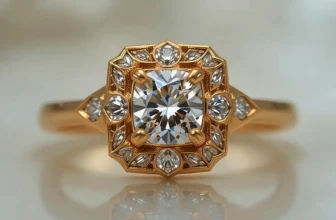The Story Behind the Oppenheimer Blue Diamond
Shopping Ads: Antique Oil Paintings On Canvas For Sale. Limited Originals Available 💰😊
Authentic hidden masterpieces, Explore old master antique oil paintings from the Renaissance and Baroque eras. From 15th-century to 18th-century Antique Paintings. Bring the Renaissance and Baroque in your home. Shop Now!
🎨 Antique Oil Paintings On Canvas Renaissance, Baroque Art Antique Oil Paintings, Make Offer 16th to 18th Century Portrait Paintings
In the glittering world of gemstones, few names evoke the awe and admiration commanded by The Oppenheimer Blue Diamond. Known for its stunning deep blue hue, remarkable clarity, and extraordinary history, the Oppenheimer Blue Diamond stands as one of the most iconic and expensive diamonds in the world. Its story spans continents, families, and centuries, encapsulating the allure of rarity, human ambition, and the pursuit of perfection in the natural world.
The Origins of the Oppenheimer Blue Diamond
The tale of the Oppenheimer Blue Diamond begins in the depths of the earth, in the diamond-rich mines of South Africa. This region, particularly the Kimberley mines, has been the source of some of the world’s most famous and precious diamonds. The diamond emerged from these ancient formations, naturally acquiring its striking blue hue due to traces of boron within its crystal lattice, a rare phenomenon that occurs in less than 0.1% of all diamonds.
Weighing an astonishing 14.62 carats, the Oppenheimer Blue is a cushion-cut diamond with a flawless, vibrant deep blue color. To put its rarity into perspective, blue diamonds are already among the rarest of colored diamonds. A flawless diamond of this size and color is a treasure of almost mythical proportions, and the Oppenheimer Blue stands at the pinnacle of gemological rarity.
The diamond owes its name to Philip Oppenheimer, scion of the illustrious Oppenheimer family, who dominated the diamond trade for much of the 20th century. The Oppenheimers were central figures in De Beers, the diamond giant that controlled much of the global diamond supply. Philip Oppenheimer, a passionate collector and connoisseur of fine gems, owned this extraordinary blue diamond, and it remained a part of the family’s collection for decades.
Philip Oppenheimer’s stewardship of the diamond ensured that it was meticulously cared for and remained in pristine condition. His appreciation for the diamond extended beyond its monetary value; it was a symbol of both natural perfection and the family legacy in the diamond industry.
Previous Ownership of the Oppenheimer Blue Diamond
While the diamond is most famously associated with the Oppenheimer family, its provenance prior to Philip Oppenheimer remains less documented. Like many significant diamonds, it likely passed through the hands of dealers and collectors before finding a permanent home in the Oppenheimer collection. What sets this diamond apart is not just its extraordinary physical attributes but also the prestige of having been owned by one of the most influential families in the diamond world.
Over the years, the diamond occasionally appeared at exhibitions, allowing the public and industry insiders to marvel at its beauty. Its history is intertwined with that of other famous diamonds, and it has become a benchmark in the world of colored diamonds.
The Auction That Made Headlines
The Oppenheimer Blue became a global sensation when it was offered at auction by Christie’s in Geneva in May 2016. The world watched with bated breath as collectors, investors, and enthusiasts bid on this rare gem. The final hammer price was an astounding $57.5 million, setting a new world record at the time for any jewel sold at auction.
This record-breaking price reflected not just the diamond’s exceptional characteristics, but also the mystique of its history. Every auction of a diamond like this is a collision of human fascination with rarity and the competitive pursuit of owning a piece of natural perfection. The Oppenheimer Blue is considered not only a diamond but a symbol of ultimate prestige and wealth.
Why the Oppenheimer Blue Diamond is So Expensive
Several factors contribute to the Oppenheimer Blue Diamond’s extraordinary value:
Color: Blue diamonds are among the rarest in the world. The deeper and more vivid the blue, the rarer and more valuable the gem. The Oppenheimer Blue’s vibrant, saturated hue makes it exceptionally desirable.
Size: At 14.62 carats, this is a large colored diamond. Most blue diamonds are smaller, which adds to the uniqueness of the Oppenheimer Blue.
Clarity: The diamond is rated as internally flawless, which is extremely rare for any diamond, let alone a colored one of this size. Flawlessness ensures maximum light reflection, enhancing the gem’s brilliance.
Cut: The cushion cut accentuates the diamond’s color and brilliance, demonstrating masterful craftsmanship. Proper cutting can make a diamond sparkle with breathtaking intensity, and the Oppenheimer Blue is a prime example.
Provenance: Ownership history matters immensely in the world of rare gems. Being part of the Oppenheimer family collection adds a historical and emotional dimension that significantly increases value.
Market Demand: High-net-worth collectors view diamonds of this quality as not only luxury items but also investment assets. The scarcity of such gems drives prices higher.
Taken together, these factors make the Oppenheimer Blue Diamond not just a jewel but a financial and cultural phenomenon. Its value is measured not only in monetary terms but also in symbolic prestige.
The Oppenheimer Blue Diamond Legacy and Cultural Significance
The Oppenheimer Blue Diamond is more than a gem; it is a symbol of human fascination with beauty, rarity, and excellence. It embodies the legacy of the Oppenheimer family and their long-standing influence in the diamond industry. The diamond’s sale at auction marked a milestone in the history of colored diamonds, sparking interest in collectors and investors around the globe.
In popular culture, diamonds like the Oppenheimer Blue are associated with wealth, glamour, and power. Yet, beyond their status symbol, these stones are scientific marvels. The unique boron-induced blue coloration provides insight into geological processes that occurred billions of years ago. Each facet of the diamond is a testament to the earth’s extraordinary natural artistry.
Where is the Oppenheimer Blue Diamond Today?
After the record-breaking auction in 2016, the Oppenheimer Blue Diamond became the property of an anonymous buyer. As is common with such high-profile acquisitions, the identity of the new owner was not publicly disclosed. It is likely part of a private collection, either held as a long-term investment or occasionally loaned to exhibitions around the world.
High-profile diamonds like the Oppenheimer Blue often travel to museums or exhibitions where they are displayed to the public under strict security. However, the majority of the time, they are securely stored in vaults, sometimes with insurance coverage running into tens of millions of dollars. While the exact location of the diamond today is not publicly known, it continues to be regarded as one of the most precious and sought-after diamonds on the planet.
Comparison to Other Famous Blue Diamonds
The Oppenheimer Blue is often compared to other legendary blue diamonds, such as the Hope Diamond and the Blue Moon Diamond. While the Hope Diamond is larger at 45.52 carats, it carries a long history of myths and supposed curses, which adds to its allure but complicates its market value. The Blue Moon Diamond, at 12.03 carats, is closer in size but lacks the same historical pedigree associated with the Oppenheimer Blue.
In the rarefied world of colored diamonds, the Oppenheimer Blue stands out because it combines size, color, clarity, and provenance, an exceptional alignment that is almost never replicated.
The Science Behind Its Stunning Blue
The captivating blue color of the Oppenheimer Blue Diamond is caused by trace amounts of boron trapped in the diamond’s crystal structure during its formation. Boron absorbs red, yellow, and green light while allowing blue light to pass through, giving the diamond its characteristic hue. This natural phenomenon is extraordinarily rare; less than 0.1% of diamonds contain sufficient boron to produce a noticeable blue color.
The diamond’s cushion cut maximizes light refraction, enhancing both its brilliance and the intensity of its color. When held under direct light, the Oppenheimer Blue shimmers with an ethereal glow that seems almost otherworldly, a true testament to the marvels of geology.
The Investment Perspective
In addition to its aesthetic and historical significance, the Oppenheimer Blue Diamond is a prime investment asset. Rare diamonds often appreciate over time, particularly those with unique characteristics and storied provenance. Collectors and institutions view diamonds like this not merely as jewelry but as tangible assets that can hedge against economic fluctuations.
The record-breaking $57.5 million sale price in 2016 was not just a reflection of market demand but also an acknowledgment of the diamond’s enduring value. For investors, the Oppenheimer Blue represents stability, rarity, and prestige, qualities that are difficult to replicate in other asset classes.
Why the Oppenheimer Blue Continues to Captivate
What makes the Oppenheimer Blue Diamond so compelling is the perfect convergence of natural wonder, historical significance, and human desire. Unlike mass-produced jewels, each facet of this diamond tells a story billions of years in the making. From the mineralogical processes deep within the earth to the careful curation by one of the most influential families in the diamond trade, the Oppenheimer Blue is an embodiment of both nature’s power and human fascination.
Collectors, historians, and gemologists alike continue to study, admire, and celebrate this extraordinary gem. It is a rare instance where beauty, science, history, and finance converge in a single, dazzling object.
The Oppenheimer Blue Diamond is more than just a gemstone, it is a legend carved in crystal. Its rich history, from the mines of South Africa to the hands of the Oppenheimer family, and finally to its record-breaking auction, underscores the allure of rarity and perfection. With its flawless clarity, deep blue color, and extraordinary size, the diamond is a masterpiece of nature, forever intertwined with human history and ambition.
Today, the diamond resides with an anonymous collector, continuing to inspire awe and admiration from anyone fortunate enough to glimpse it. Its value, both monetary and symbolic, remains unmatched, and its story serves as a reminder of humanity’s enduring fascination with beauty, rarity, and the extraordinary treasures our planet can produce.
The Oppenheimer Blue Diamond stands as a timeless emblem of elegance, rarity, and the enduring power of nature’s most precious creations. For collectors and admirers alike, it is the ultimate expression of what makes a diamond not just a gem, but a legend. image / christies




